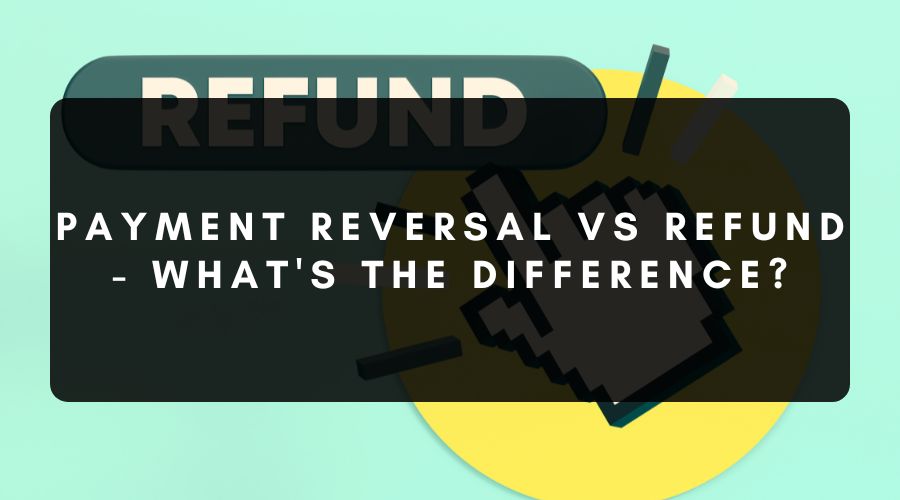
Payment Reversal vs Refund – What’s the Difference?
E-commerce merchants are bound to have some transactions that don’t go 100% as planned. When this happens, knowing the differences between a payment reversal vs refund will help you respond well and minimise any inconvenience to your business and your customers.
The difference between a payment reversal and a refund is that payment reversals occur after a transaction has been authorised but before the funds have been captured. Refunds occur after a transaction has already been finalised and settled.
What Is a Payment Reversal?
A payment reversal (also referred to as an authorisation reversal) is an action that disrupts and reverses a transaction in progress. This means the original transaction is no longer valid and the merchant no longer has access to funds that were previously authorised. Payment reversals essentially erase the original transaction.
How Do Reversal Transactions Work?
Reversal transactions or authorisation reversals occur when a merchant, acquiring bank, or customer requests the bank or payment processor to cancel the original transaction. Reversal transactions are most often initiated by the merchant. They are often due to a problem with the original payment such as a technical issue, a duplicate or incorrect charge, or as a response to a report of fraud.
When a bank or payment processor receives a reversal payment request, it contacts the merchant to make sure the request was successful. Any funds that were authorised are then returned to the customer.
How to Avoid Payment Reversals
Your business won’t be able to eliminate payment reversals completely. However, implementing these best practices can reduce the number of payment reversals you need to initiate and minimise their impact on your business.
Guarantee Secure Payments
Payment reversals are often requested in cases of fraud. You can lower your business’s susceptibility to fraud by using a reliable payment processing system.
Ensuring safe transactions is a must for e-commerce businesses. It is estimated that over 70% of EU citizens between 16 and 74 years of age purchased goods or services online in 2023. Look for a payment processor that offers security measures like Level 1 PCI-DSS compliance and a customisable fraud scrub.
Reduce Human Error
Human errors often create a need for payment reversals, for example, when the customer is charged incorrectly or when the company offers an item that isn’t available. You can reduce these incidents by paying attention to inventory and stock levels, and double-checking that the correct amount is being charged.
Ensure Clear Communication
Customers can sometimes flag a payment they’ve forgotten about or weren’t expecting to be charged. Make the projected clearing date clear to the customer by sending an e-mail that confirms their repeat purchase or subscription payment and states the date when the funds will be withdrawn.
What Are Refunds?
Refunds occur when funds are returned to a customer who has already paid for goods or services. They often happen when a customer isn’t satisfied with their purchase or if they receive the wrong item. Refunds can be initiated by the customer, the merchant, or the customer’s card issuing bank (referred to as a chargeback).
How Do Refunds Work?
When a customer requests a refund, the merchant must determine whether the refund request is in line with the company’s refund policy. If it is, the merchant will begin the refund process. This involves transferring funds back to the customer’s account or sending credit to the credit card used to purchase the item or service. This process can take varying amounts of time depending on the payment method and the merchant’s return policy.
Businesses must try to avoid controllable circumstances that lead to having to issue refunds. Apart from losing sales, businesses will run up a bill of interchange fees (with no corresponding revenue) for processing the original transactions plus the refunds.
When Do Customers Ask for Refunds?
Customers can ask for refunds in several situations, including when:
- A product is damaged, defective, or the wrong product was shipped
- A product doesn’t meet the customer’s expectations
- Delivery is too slow
- A customer cancels their order before shipment
How to Reduce the Need for Refunds
If you find that your business deals with refunds regularly, look for trends in the reasons they are needed and pinpoint areas for improvement. For example, if your customers regularly leave feedback that your products don’t meet the description, make the descriptions clearer to avoid customer disappointment and the refund requests that follow.
Forced Refunds or “Chargebacks”
A credit card chargeback is a type of forced payment reversal initiated by a cardholder’s issuing bank after the original transaction has already been settled. This typically happens as a result of claims of fraud, a difficult or lengthy merchant-initiated refund process, or as an act of “friendly fraud” on the customer’s part. Chargebacks are the most costly kind of reversal transaction for merchants because they come with additional fees and potential sanctions from Visa and Mastercard.
The best ways to prevent chargebacks are to:
- Ensure products are described accurately on the website and shipped quickly to customers
- Keep records of product delivery
- Use robust fraud prevention measures
- Work with a payment gateway provider that mitigates chargebacks before they go through
Refunds and Reversal Transactions: Key Differences
There are several differences between these two processes:
| REVERSE TRANSACTIONS | REFUNDS | |
| Initiator | Merchant | Client |
| What happens to the funds? | The whole transaction is cancelled. Funds are never transferred from the customer to the merchant’s account. | Funds are returned to the customer’s account after the merchant has authorised and captured the transaction. |
| Processing time | Within a few hours | Several days to weeks |
| Fees | Free | May incur fees |
| When they occur | When a transaction is considered fraudulent
When an item purchased is out of stock
When errors like overcharging occur |
When a customer is dissatisfied with their purchase or an item never arrives |
Reduce Payment Reversals and Refunds
Your choice of payment processor can significantly reduce the number of payment reversals your business experiences. By avoiding fraudulent payments and chargebacks, e-commerce businesses can streamline their operations and boost their bottom lines.
Knowing the difference between payment reversals and refunds empowers you to navigate payment mishaps more effectively. As a business owner, having a clear reversal and refund policy readily available helps to manage customer expectations and ensure a smoother resolution process.

